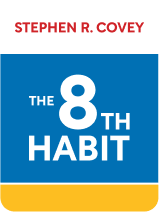

This article is an excerpt from the Shortform book guide to "The 8th Habit" by Stephen R. Covey. Shortform has the world's best summaries and analyses of books you should be reading.
Like this article? Sign up for a free trial here .
What are organizational relationships? How are they essential in the day-to-day operation of a company?
According to Stephen Covey, the author of The 8th Habit, relationships are the core of organizations. Creating constant communication with your team is what keeps an organization running smoothly and builds strong organizational relationships.
Keep reading to learn how to strengthen organizational relationships.
The Organization
Before understanding how to form organizational relationships, you need to understand the fundamental parts of an organization. Covey sees organizations as consisting of four main components that align with the individual’s body, mind, heart, and spirit.
The 4 Components of Organizations
Covey maps his model of individual human beings onto organizations as follows:
- The body of an organization consists of its physical and economic components: its buildings and physical environments, cash inflows and outflows, raw materials, and products.
- The mind of an organization is its ability to strategize and set a path for the future.
- The heart of an organization is the people and human relationships within it.
- The spirit of an organization is its moral compass and internal accountability structures, including its mission and the way it allocates responsibilities across teams and individuals.
By looking at each of these components separately, Covey says we can diagnose and treat many of the common problems that organizations face. For example, a lack of enthusiasm and emotional investment from employees is caused by neglecting the heart of the organization and can be remedied through empowering leadership. The lack of a mission statement—or, conversely, having an overly idealistic or hollow mission statement—is caused by neglecting the mind of the organization and can be remedied by assuming the leadership role of The Navigator.
| Alternate Metaphors for How Organizations Work Covey’s human being metaphor for organizations isn’t an unusual approach—in fact, in many countries, the law treats corporations as a kind of person. However, a variety of metaphorical options are available. In Images of Organization, economist Gareth Morgan describes eight metaphors that we commonly use to talk about organizations: machine, organism, brain, cultural system, political system, psychic prison, the instrument of domination, and flux and transformation. Each metaphor has different implications for how we understand leadership, organizational change, and our work inside organizations, so it’s important that we choose our words carefully. |
The 4 Components of Strong Organizational Relationships
For Covey, organizations are made up of one thing: relationships. He defines organizations as networks of relationships with a shared purpose. Strong, healthy relationships mean a strong, healthy organization.
You can strengthen organizational relationships by applying the intelligences of your body, mind, heart, and spirit:
- Apply the intelligence of the body through engagement, the desire to improve things in a meaningful way. Show engagement by dedicating time and effort to achieving improvements.
- Apply the intelligence of the mind through independence, which is exercising your freedom to choose. Build independence by taking the initiative to do something as part of a long-term plan.
- Apply the intelligence of the heart through selflessness, which is the ability to deprioritize your own opinions and needs. Practice selflessness by putting the needs of someone else above your own.
- Apply the intelligence of the spirit through honesty, which is a conscious commitment to truth and transparency. Practice honesty by frequently revisiting your principles and questioning whether you’re truly upholding them.
Together, these components foster trust. According to Covey, trust isn’t an individual quality—instead, he sees it as the nurturing environment needed for a relationship to flourish.
Additional Advice on Building Strong Organizational Relationships
Covey’s advice for strengthening relationships is fairly abstract. In practice, how can you build strong organizational relationships day by day? In The Power of Moments, Chip and Dan Heath suggest that you strengthen your relationships by focusing on moments of connection with others. They offer the following three-step process:
- Create a shared moment. Invite people with a shared goal to spend time together.
- Allow for voluntary struggle. People who choose to experience hardship together form tighter bonds.
- Reconnect with the meaning of the work. Show people how what they’re doing fits into the bigger picture.
The Heaths don’t mention trust, which is central for Covey, though he doesn’t go into great detail about what it means. In The Culture Map, business professor Erin Meyer fills in some of the gaps: Meyer explains that there are two basic types of trust and that the type you prioritize at work depends on your culture.
- In cultures in which trust is primarily task-based, such as Denmark and the United States, people who work competently and consistently are trustworthy. To build task-based trust, demonstrate to others that you’re efficient and professional. Leaders in these cultures should show that they care about their staff’s professional needs.
- In cultures in which trust is relationship-based, such as Saudi Arabia and Nigeria, trustworthy people are those whom you’ve spent a lot of time with or know well. To build relationship-based trust, colleagues should spend time getting to know each other, while leaders should create opportunities for staff to spend time together socially.

———End of Preview———
Like what you just read? Read the rest of the world's best book summary and analysis of Stephen R. Covey's "The 8th Habit" at Shortform .
Here's what you'll find in our full The 8th Habit summary :
- Why the most important job of a leader is to nurture individuality
- How an organization is like the human body
- Why leaders should let their employees evaluate them






